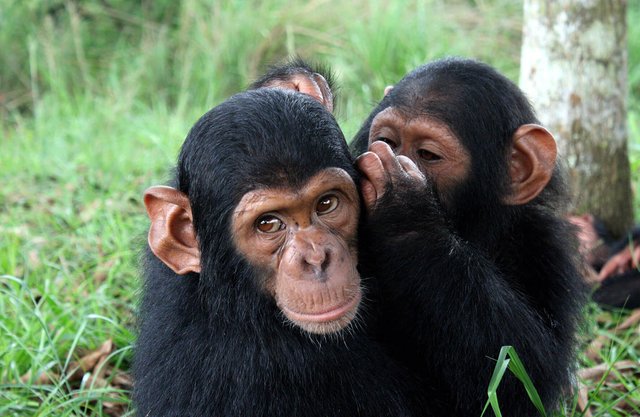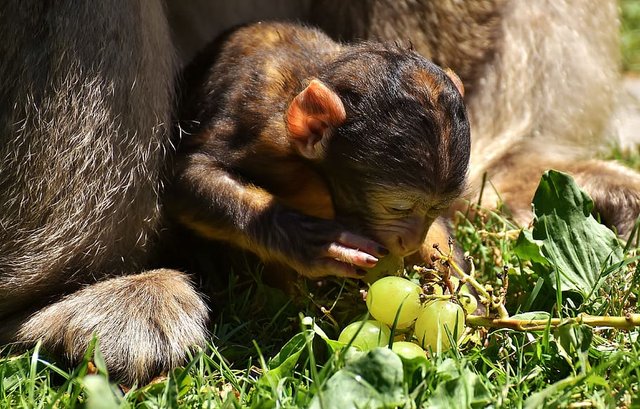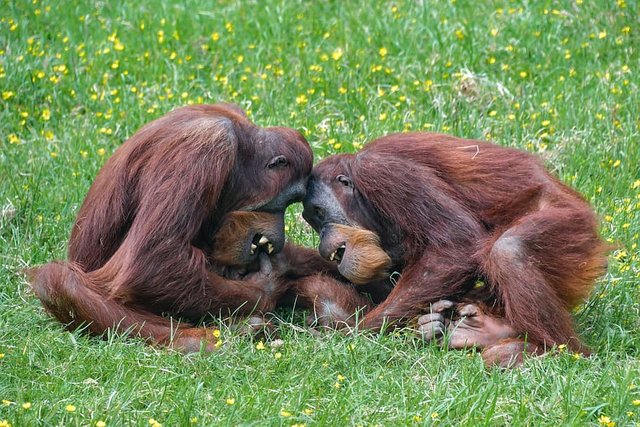Exploring the Fascinating Lifestyle of Apes: A Glimpse into Their World
Introduction
Apes, our closest relatives in the animal kingdom, are captivating creatures that share a remarkable connection with humans. With their advanced cognitive abilities, social dynamics, and intricate behaviors, apes offer a window into our evolutionary past and provide invaluable insights into the complexity of life on Earth. In this article, we will delve into the captivating lifestyle of apes, shedding light on their habitats, social structures, communication, and daily activities.

Habitats and Diversity
Apes inhabit a range of diverse environments, from dense rainforests to mountainous terrain. They are native to Africa and Southeast Asia and can be found in countries like Uganda, Rwanda, the Democratic Republic of Congo, Borneo, and Sumatra. Apes are divided into two families: Hominidae (great apes) and Hylobatidae (lesser apes). The great apes include chimpanzees, bonobos, gorillas, and orangutans, while the lesser apes encompass gibbons and siamangs.
Social Structures
Apes are renowned for their intricate social structures, which vary among different species. Chimpanzees and bonobos exhibit a fission-fusion society, where individuals form fluid groups that come together and split apart based on factors like food availability and social dynamics. Gorillas, on the other hand, live in cohesive family groups led by a dominant silverback male. Orangutans are largely solitary creatures, with males and females only coming together for mating.
Communication
Communication plays a crucial role in ape societies. While apes lack the complex language systems of humans, they communicate through a combination of vocalizations, gestures, and body language. Each species has its own repertoire of calls and signals, enabling them to convey emotions, establish dominance, and warn of danger. Chimpanzees are particularly adept at using tools to communicate, using sticks to probe for termites or to express aggression.

Diet and Foraging
Apes exhibit a wide range of dietary preferences. While they are primarily herbivores, their diets may also include insects and small animals. Chimpanzees are known for their tool-assisted foraging, using sticks and leaves to extract termites and ants from their nests. Bonobos have been observed using tools to crack open nuts. Gorillas are mainly herbivores, consuming a diet rich in leaves, stems, and fruits. Orangutans have a frugivorous diet, primarily consuming fruits, leaves, and flowers.

Play and Learning
Play is an essential aspect of ape behavior, particularly in young individuals. Playful activities contribute to the development of cognitive skills, social bonds, and problem-solving abilities. Apes engage in various forms of play, such as chasing, wrestling, and mock-fighting. These activities not only strengthen relationships within the group but also help young apes acquire important survival skills.

Conservation Challenges
Despite their captivating lifestyles, apes face numerous conservation challenges. Habitat destruction, deforestation, and illegal wildlife trade threaten their populations. Climate change, disease outbreaks, and human-wildlife conflict further exacerbate their plight. Conservation efforts, such as protected areas and community-based initiatives, are crucial for ensuring the survival of these remarkable creatures and their unique lifestyles.
Conclusion
The lifestyle of apes is a testament to the diversity and complexity of life on Earth. Through their social interactions, communication methods, and daily activities, apes provide a unique glimpse into our shared evolutionary history. As we continue to learn from and about these incredible creatures, it is imperative that we work together to protect their habitats and ensure a sustainable future for both apes and the planet as a whole.